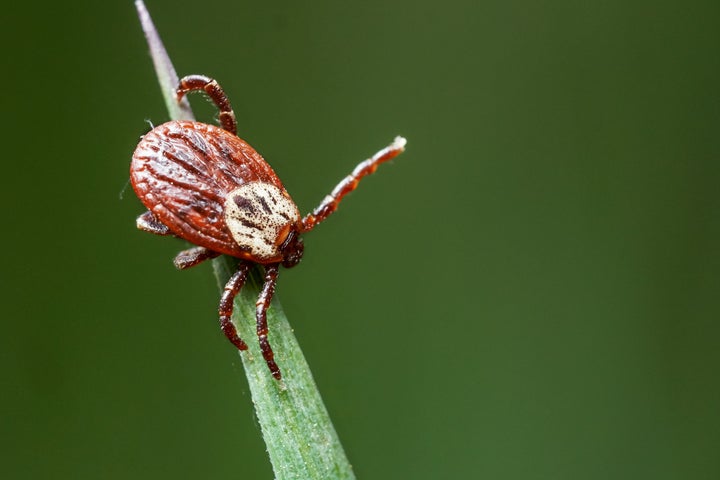
I think it’s important to practice patience, kindness, and understanding with all of Earth’s creatures. We’re in a biodiversity crisis after all, and often, the creatures we like the least are the ones most valuable to our ecosystems.
With all that said: screw ticks.
Aside from looking incredibly creepy, the blood-sucking arachnids (yes, technically they’re arachnids) can also spread disease. In fact, they’re transmitting more Lyme disease than ever in the UK right now (oh, good).
And recently, a study shared a new piece of terrifying tick news (without anyone’s consent): apparently, some species can fly. Sort of, anyway.
Uh, what?
Yes, really. The creatures need to suck blood to survive, but many are tiny and can’t jump (like fleas) or fly (like mosquitoes). So, they rely on direct contact with larger mammals to secure the blood, such as animals brushing their legs on strands of grass.
That is, with the exception of some species that can ‘fly’.
The recent study revealed that some ticks can use static electricity to zip through the air towards their prey. “The tick Ixodes ricinus (Figure 1A) can close the gap to their hosts using ecologically relevant electric fields,” the researchers shared.
OK, but how do they do it?
To be fair, what they’re doing isn’t quite the same as ‘flying’ with wings or another form of self-propulsion. Instead, some ticks can transport themselves through the air via static electricity.
This happens because animals create friction when they move through grass, sand, and other surfaces. This creates either positive or negative electrical charges, Sam England, a biologist and postdoctoral researcher at Berlin’s Natural History Museum, told National Geographic.
“And if they’re the opposite polarity, they’ll be attracted to each other. And if they’re the same polarity, they’ll be repelled from each other,” England says, It’s the same logic behind the hair/balloon experiment you probably did in school; and yes, it works for ticks too.
The experiment involved researchers creating friction by rubbing a dried rabbit foot (lovely) on a sheet of acrylic. This created those opposite positive-negative charges we just spoke about – and they were holding ticks in forceps between the two surfaces, sort of like a grimmer version of horses in racecourse stalls.
Once the forceps were released, the Lyme-spreading castor bean tick nymphs the team had caught “flew” towards one surface or another. In fact, the study showed that because ticks are so tiny, their personal negative or positive charge might be overwhelmed by broader electrical currents.
And before you ask, we’ll answer; yes, the theory ought to apply to other creepy crawlies, too.
“In fact, another recent study found evidence that nematodes can use static charge to zoom onto bumblebees, which they use to hitch rides to new areas.” shared National Geographic.
Well, there goes my lunch...